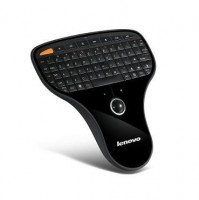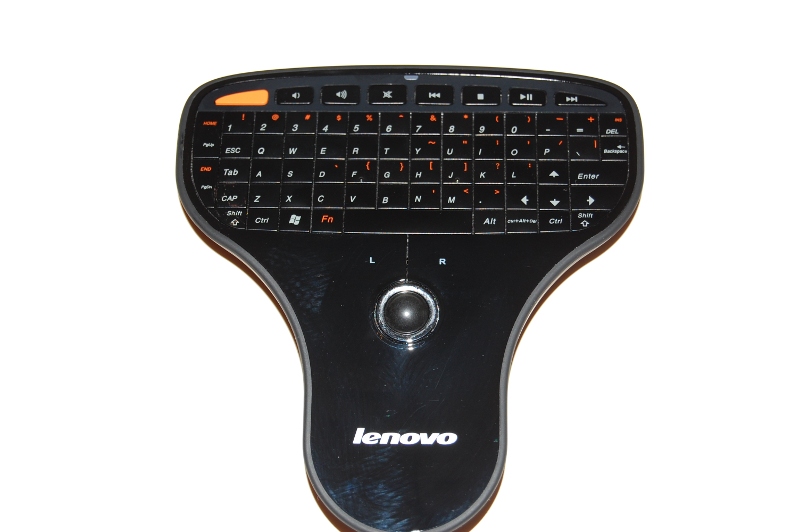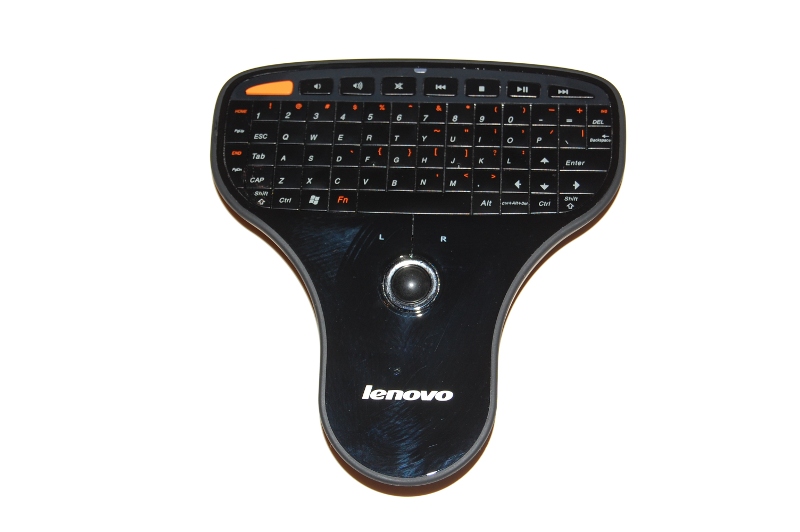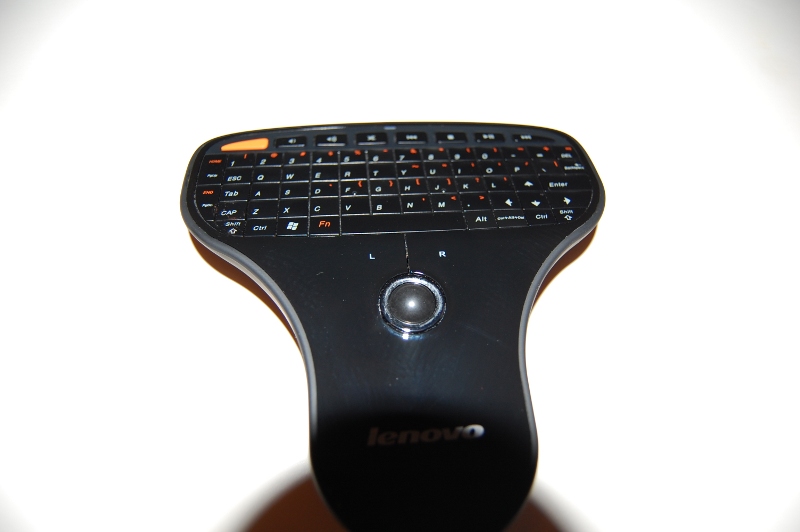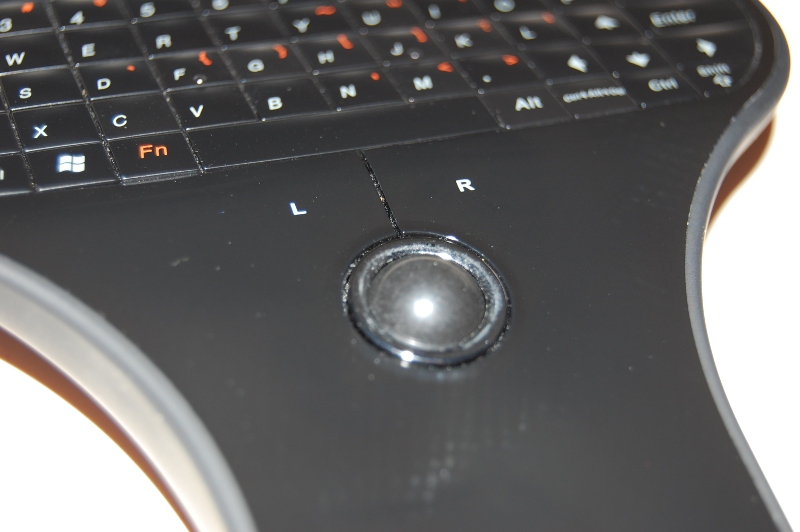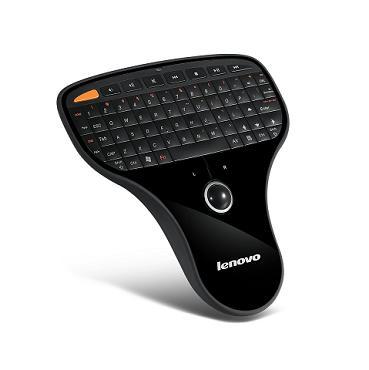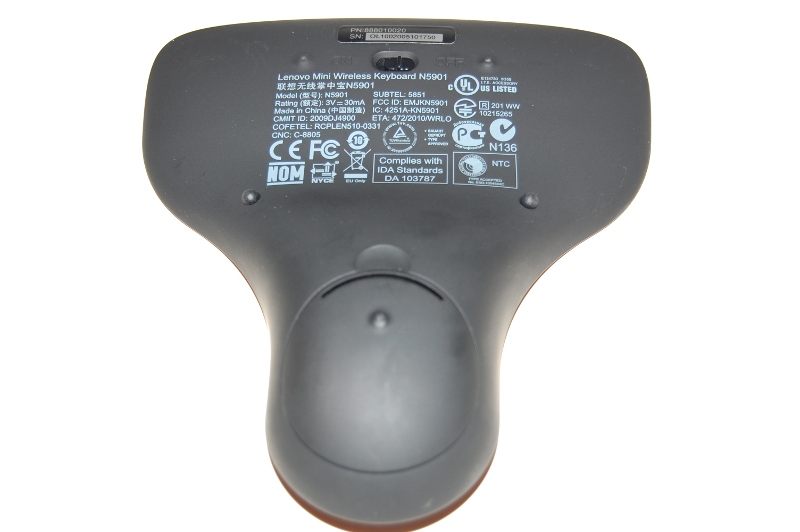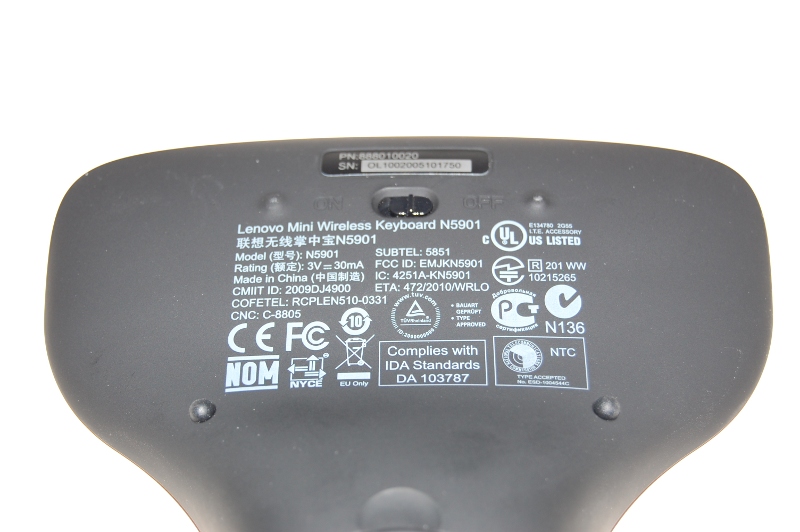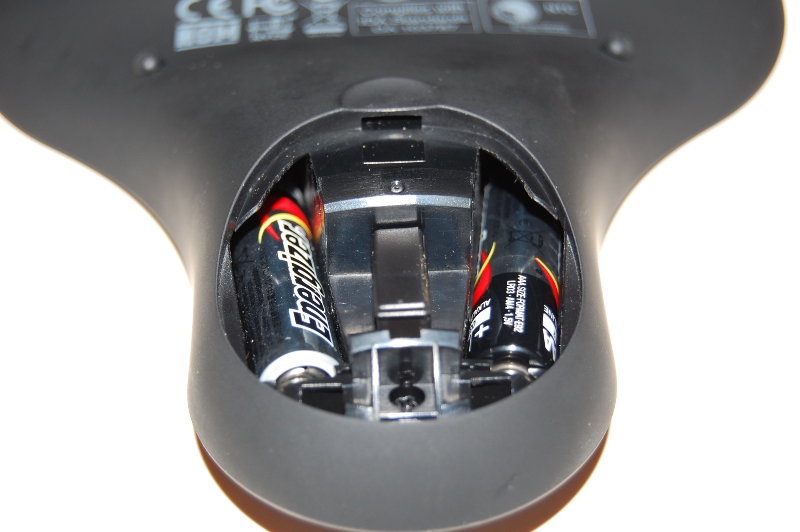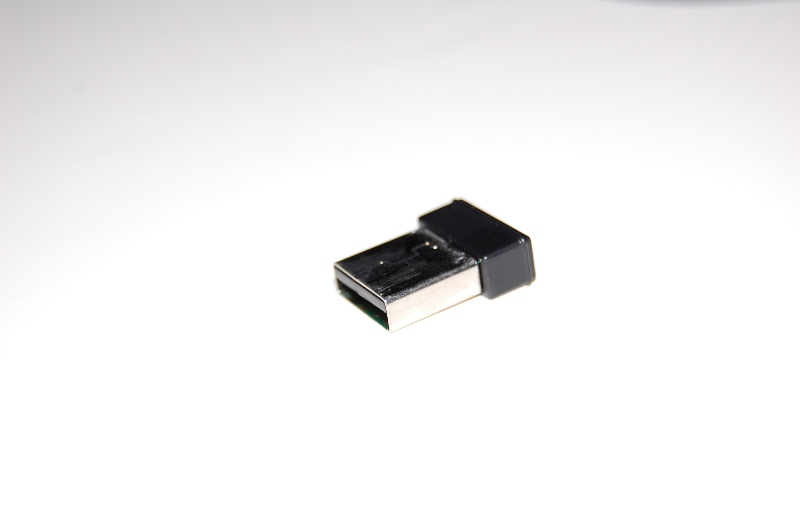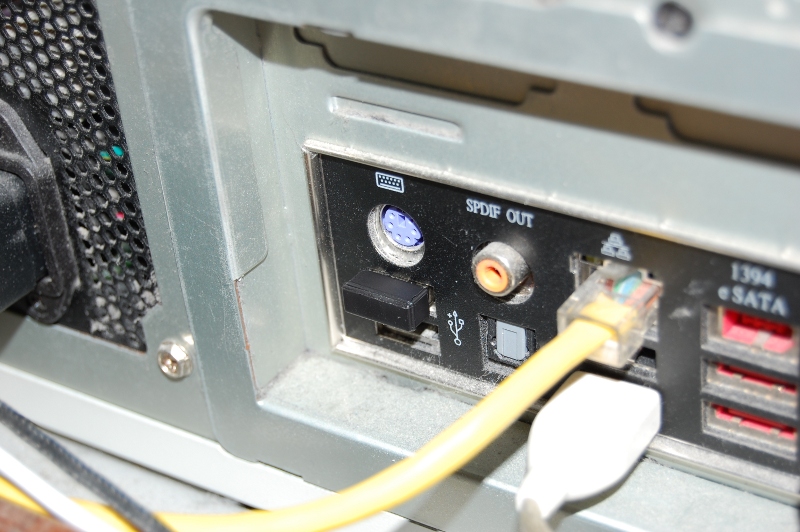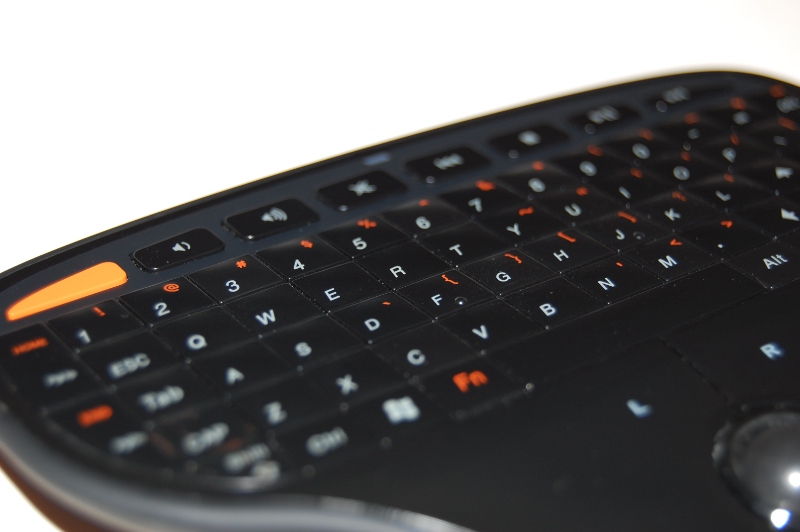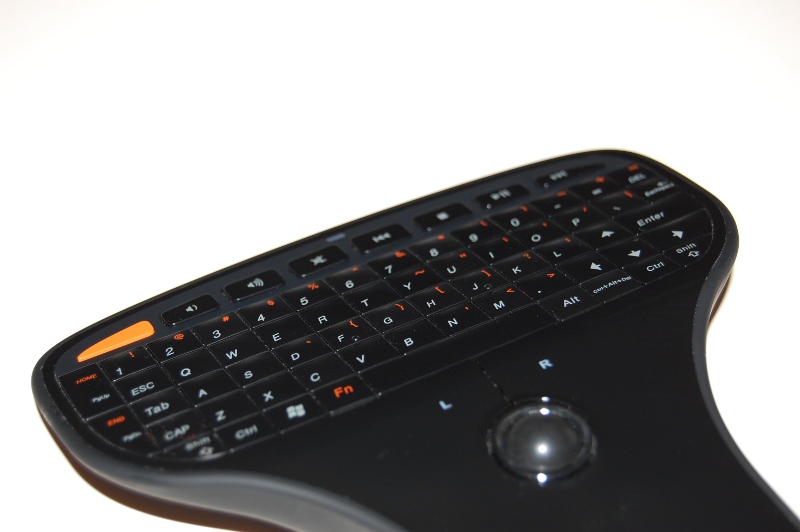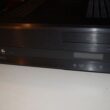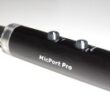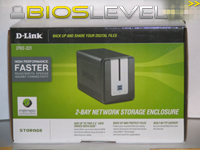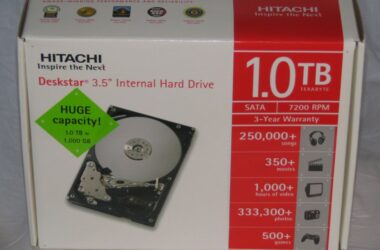There have been hundreds of different wireless input devices released over the last several years as home theater PCs have become more popular. The size, shape, and overall functionality of these devices has varied greatly. Lenovo, the successor to IBM's PC division, released the N5901 to set a new standard in wireless input, putting a mouse and keyboard in a form factor that can easily be manipulated with a single hand.
This ultra-compact wireless controller is easily portable between systems and rooms, as it features a compact plug-n-play wireless receiver that fits into an standard USB 2.0 port. The unit's 2.4GHz radio paired with two double-A batteries provides an excellent 32-foot operational range. From the specifications, this control would make an ideal input device for MythTV, XMBC, or even a business presentation.
Appearance
The Lenovo N5901 is shaped something like a keyboard with a standard televesion control fused at the bottom. The controller is uniform from the left or right side, removing any need to be left- or right-handed while operating this unit.
The top of the N5901 is a glossy black, and smooth to the touch. The keyboard configuration is nearly a standard QWERTY layout, with a few additional multimedia keys at the top of the unit. The keys themselves aren't much bigger than what you'd expect to find on the latest touchscreen phone from HTC or Apple. Instead of an optical sensor, the mouse component of the unit is a spherical trackball, with two buttons above it for left- and right-click.
The black gloss is quite succeptible to fingerprints, but then again, this isn't a showpiece.
On the underside of the unit, the standard technical details are printed inbetween an on-off switch and the battery cover. The underside is more of a graphite gray in color, and slightly less smooth to keep the unit from slipping from your hands.
Specifications
- Control your system connected to large screen:
- Watch on-line videos
- Review images
- Edit documents
- Control presentations in an office, conference room or classroom setting
- Integrated keyboard and mouse design with dedicated multimedia keys:
- Windows multimedia controls: Volume control, Mute, Previous, Stop, Play / Pause, Next
- Easily to manipulate the mouse trackball using your thumb
- Up to 10-meter (32-feet) control via micro-size USB receiver using 2.4GHz technology
- Small, lightweight, palm-sized single-hand design
- Weighs 0.13 kg (0.29 lb, 4.6 oz)
- Quick setup, no driver installation, simply install the two AA batteries and micro-size USB receiver
- Includes two AA batteries
- On/Off switch
- Battery storage comparment for the micro-size USB receiver
Installation
Installation was a snap. Removing the battery cover on the bottom of the device reveals two battery slots and the USB receiver. The USB receiver is snug enough in its holder that it won't fall out if you hold the N5901 upside down, but it is easily pulled out. When plugging the connector into an available USB slot, the receiver is recognized by the Linux kernel right away and the device is enabled in Xorg almost instantly. Its worth noting that I'm using the event-driven drivers, rather than having Xorg configured to use a single mouse and keyboard.
The final step of installation for the Lenovo N5901 is turn the unit to the "ON" position and hold down the orange button to sync the device to the receiver.
Usage & Final Thoughts
Once the Lenovo 5901 has been synced up with its receiver, operation is smooth and easy to get accustomed to. The trackball and left- and right-buttons are easily accessed with a single hand, while two hands are required to utilize the full QWERTY keyboard.
The buttons, again larger than what you'd find on a mobile phone, are large enough to type quickly with your thumbs. It may be interesting to see whether one could type faster on the N5901 or the latest smartphone.
The multimedia keys are: Volume Down, Volume Up, Mute, Skip Backward, Stop, Play/Pause, and Skip Forward. They are mapped the same way a full-size multimedia keyboard is mapped and require no additional configuration for them to work.
Overall, the Lenovo N5901 is a breeze to both set up and use. It's a fresh alternative to full-size wireless keyboards or using a smartphone as a wireless controller, and the design is excellent. Not many other multimedia remotes have a mouse that is easy accessed with a single hand. Lenovo's design accomplishes a lot in a small package, and should be on anyone's shopping list looking to build a home theater, no matter what the operating system is.
Rating:
9 / 10



